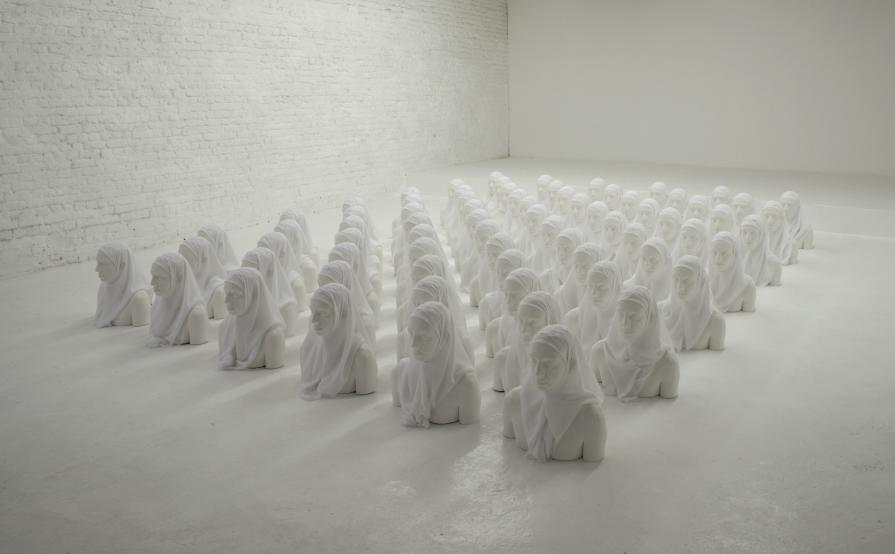72 Vierges
Even though it represents a central element of religion, prayer remains something separate for Lahlou. “I think prayer is something magnificent. I’ve done a lot of praying, and I was a dancer and I associate it with choreography. For me, it’s really a gift of the body. When you have 150 people — on Fridays, 1,000 or more — who are doing the same motion at the same time, it’s something generous.” Although Lahlou may involuntarily cause division, the act of prayer he represented in “Salât” is activated five times a day, “in harmony with the whole world.”
By veiling himself entirely, Lahlou references Greek sculpture, but in plaster instead of marble. The multiplication of images in his most recent work, “72 Vierges” (“72 Virgins”) — “a family portrait where I am unmade” — also has a parallel in El Greco, who reproduced the same face several times in his “Assumption of the Virgin.” “Ultimately, all the figures that are reproduced, I have the impression that they are canceled out. It’s one, or nothing,” Lahlou says. “By multiplying, there is a sort of absence.”







Comments 0
Say something